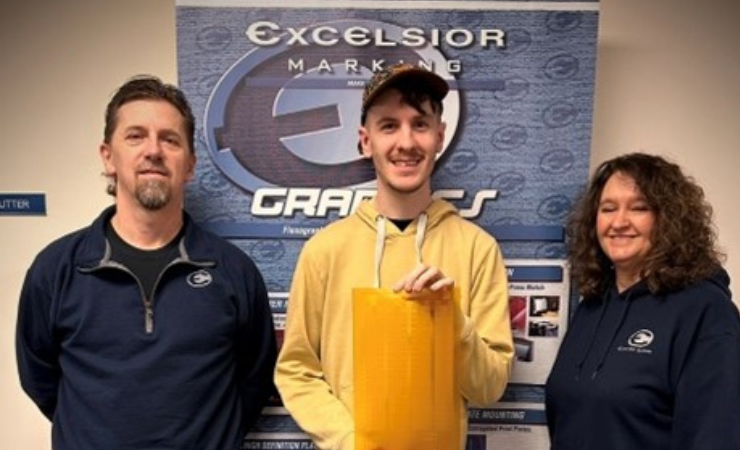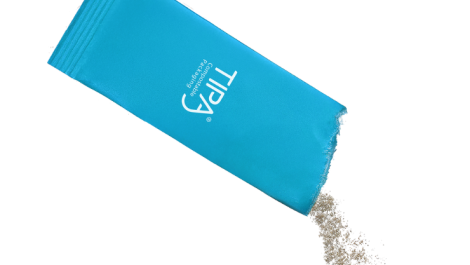Ohio-based Excelsior Marking has sought to improve its environmental and operational performance with the adoption of Asahi Photoproducts’ AFP-R reduced solvent flexo plates, which it is supplying to its trade customers. Excelsior said the switch has already helped it gain new business.
Asahi claims that the AFP-R solvent washable plate can save 30% in solvent use, and is 50% faster in platemaking, thereby saving both time and energy. It is a ‘hard’ flexo plate, suitable for high quality flexible packaging, label and paper applications.
Tami Warlop, graphics manager at Excelsior, said that faster processing time was a key driver for the move to the AFP-R plate. ‘With these plates, our plate turnaround time is about an hour to an hour and a quarter faster. The washout and drying times are cut in half compared to other material we use. And I will say that the number one thing we are seeing with the AFP-R plates is the consistency. We rarely have to change the setting for the relief from box to box, which is huge for us. With other products we have tested, the exposure times may change for back exposure from batch to batch, costing us time and effort to get the quality we need.’
Excelsior Marking sourced the plates through Asahi’s distributor Wikoff Color Corporation, though it has used a number of Asahi plate types previously and is also currently imaging flat top BFT and medium hard DSF plates from the manufacturer. The company produces metal engraving, metal stamping and a range of other products, as well as flexo plates, which accounts for about 50% of its business.
Another aspect of the adoption of AFP-R is the opportunity to offer Asahi’s CleanPrint technology, according to Excelsior’s technical sales manager Brian Collins. This is a specially engineered technology that transfers all remaining ink to the printed substrate, reducing makeready time, ink consumption and the necessity of press stops for cleaning.
‘This is important to clients because they achieve better press efficiency, since they rarely have to stop the press for plate cleaning, and thus the plates last an average of twice as long. Some are using solvent inks; others are using UV inks. And both types of clients are very happy with these plates,’ said Mr Collins.






